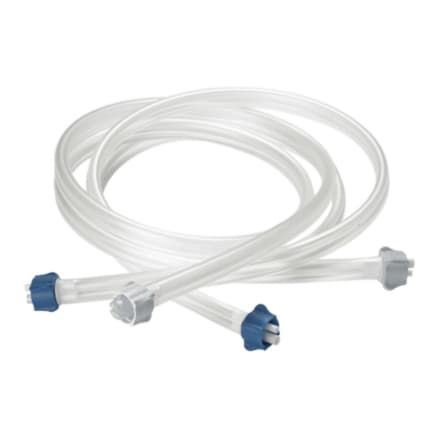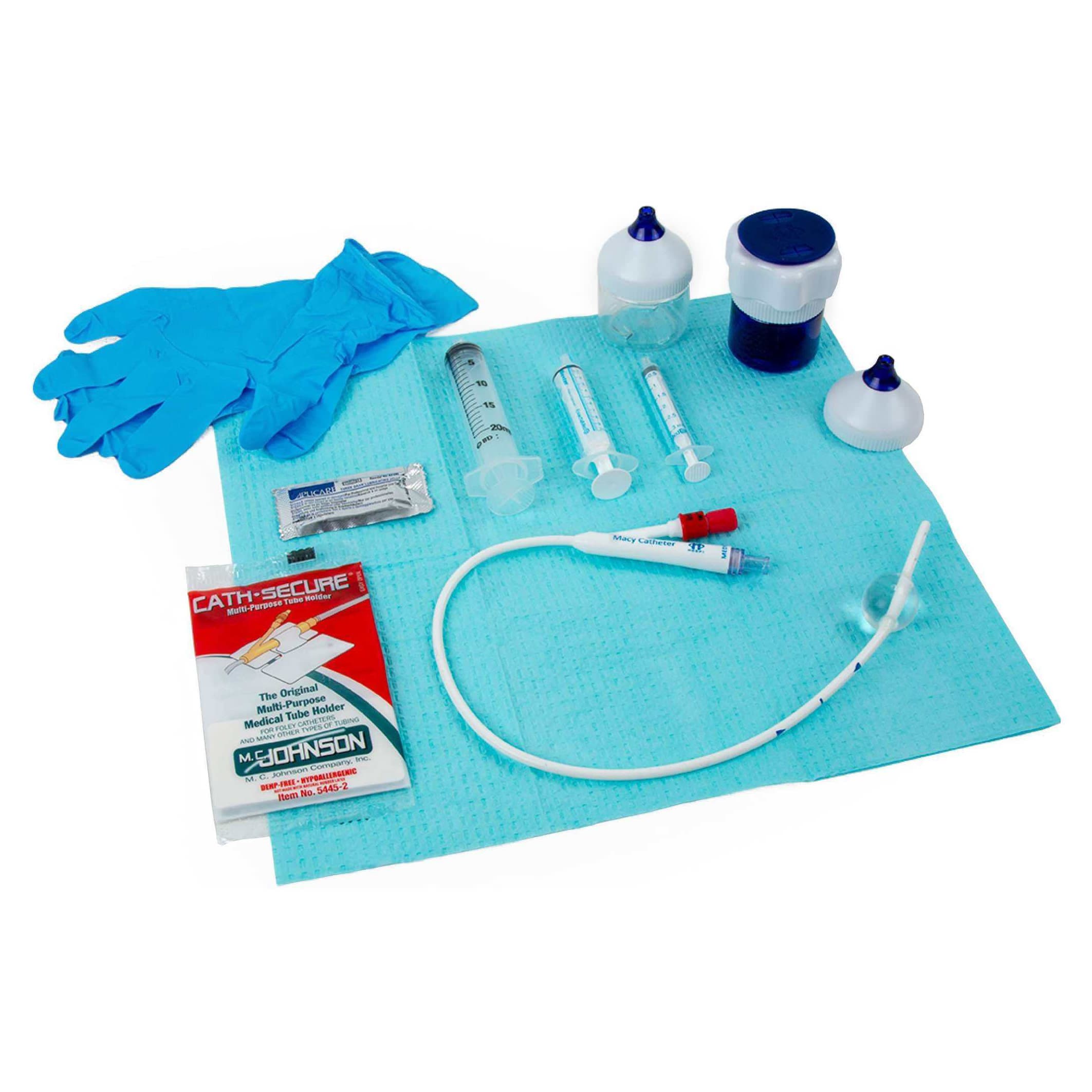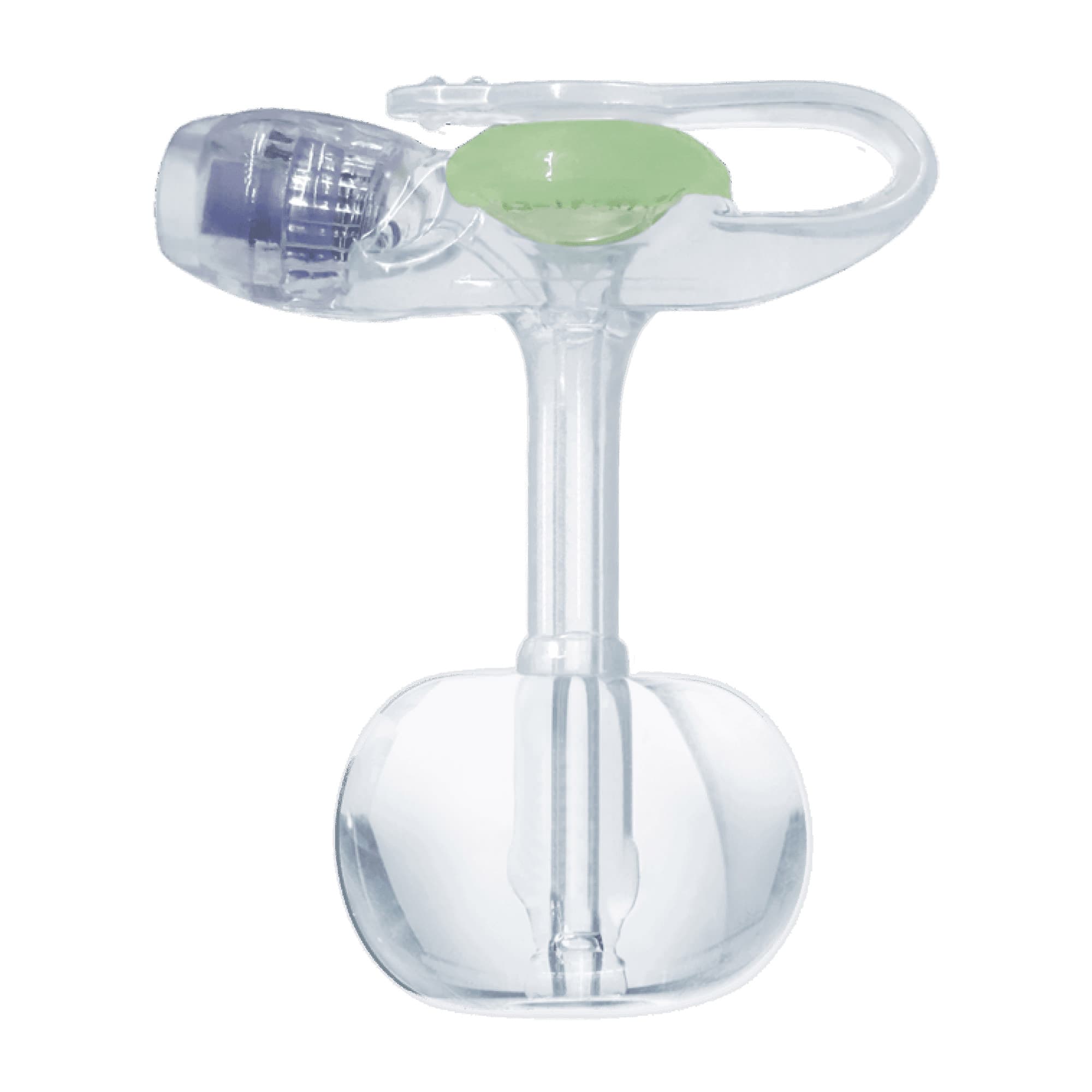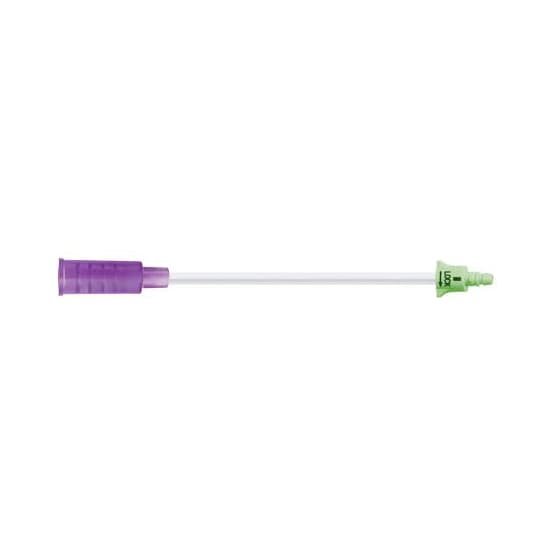

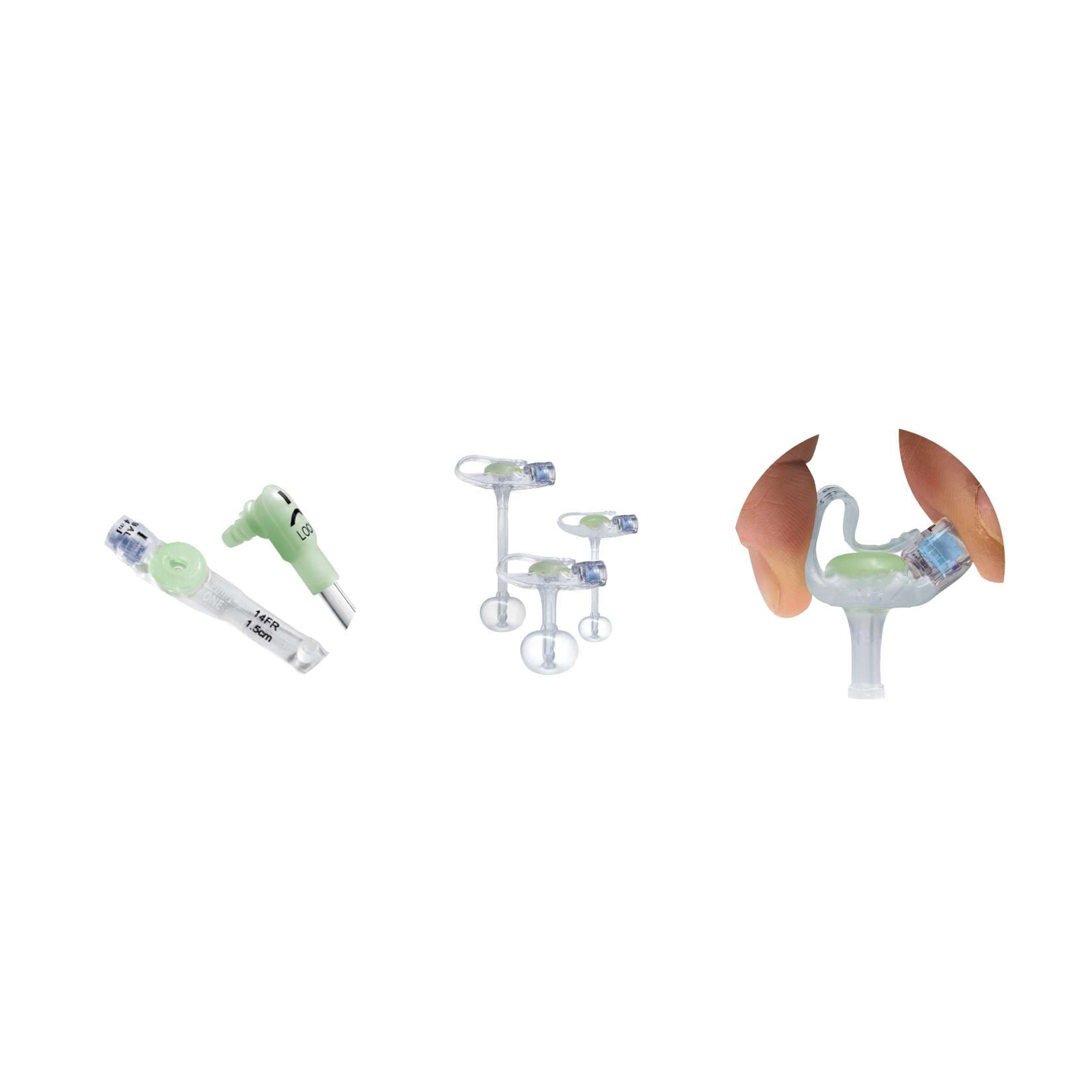
MiniACE Enema Button Device
PayPal Pay Later
Starts From
Description
AMT MiniACE Enema Button Device is a balloon button system designed for Antegrade Continence Enema (ACE) procedures. It is the only FDA-cleared balloon button device for ACE and provides a secure, gentle, and patient-specific solution for managing antegrade enemas. With an anti-leakage valve, exclusive apple-shaped balloon, and tapered tubing, MiniACE reduces the risk of leaks and accidental pull-outs. It is cleared for initial placement and can be easily exchanged in the exam room without anesthesia, radiation, or costly trips to IR/OR, supporting convenience and patient comfort.
Features:
- FDA-Cleared Balloon Button Device: MiniACE is the only balloon button device cleared for Antegrade Continence Enema (ACE) procedures.
- Anti-Leakage Valve: Built-in valve prevents backflow of irrigation fluids.
- Initial Placement Approved: Unlike the Chait Trapdoor, MiniACE is cleared for initial placement.
- In-Office Exchange: Device can be replaced in the exam room with no anesthesia, no radiation, and no expensive IR/OR visits.
- Exclusive AMT Apple-Shaped Balloon: Along with tapered tubing at the external bolster, reduces the risk of leaks and enhances secure placement.
- Gentle Retention Balloon: Designed to be soft on the intestinal walls compared to coils and exposed tips of alternatives like the Chait Trapdoor.
- Secure Positioning: MiniACE is 450% more secure within the stoma compared to the Chait Trapdoor, lowering the risk of accidental pull-outs.
- Patient-Specific Sizing: Custom sizing minimizes pistoning (excess movement) within the stoma, helping reduce the risk of nerve damage and pain at the site.
Understanding Antegrade Enema (ACE)
- An antegrade enema is an alternative method of delivering an enema.
- Unlike a retrograde enema, which is given “bottom up” through the rectum, an antegrade enema is administered “top down” through the cecum, the starting point of the colon.
- The process involves inserting a tube through a surgically created stoma in the abdominal wall to deliver irrigation fluid, which helps empty the bowels.
What ACE Means:
- ACE stands for Antegrade (forward direction) Continence (bowel control) Enema (colon washout).
- ACE procedures may be recommended for patients with severe constipation or fecal incontinence.
- Conditions often associated include Hirschsprung’s disease, spina bifida, gastrointestinal dysmotility, and congenital malformations.
- Compared to traditional enemas, ACE procedures may provide a more complete flush of the colon and can enable self-administration, supporting greater independence and improved quality of life.
Types of ACE Procedures:
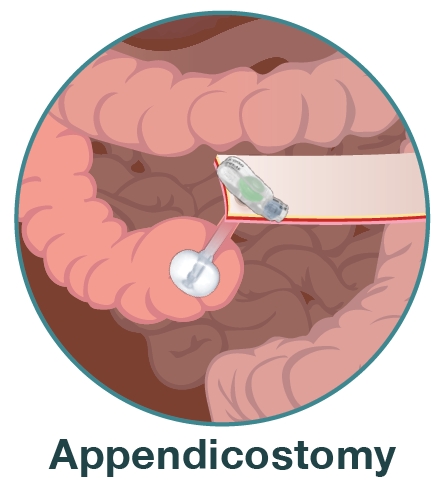
Appendicostomy (Malone Procedure / MACE):
- A surgical pathway is created using the appendix, which connects the large intestine to the abdominal wall. The MiniACE can be placed through this channel to allow direct passage of irrigation fluid into the colon.
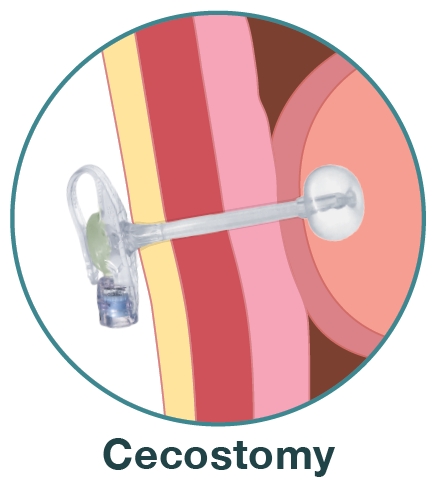
Cecostomy:
- A surgical channel is created directly between the abdomen and the cecum (the first part of the large intestine). When the MiniACE is placed into a cecostomy stoma, it is often referred to as a C-tube, facilitating antegrade enemas by providing direct access for irrigation fluid delivery.
How to Use:
- Stabilize: Gently steady the MiniACE button and the skin around the stoma with one hand so it doesn’t move.
- Align & Insert: Line up the irrigation set’s connector with the port on the button (match the alignment marks). Insert the connector straight in until it seats.
- Rotate: Turn the connector in the direction of the arrow toward the “LOCK” label.
- Lock: Keep turning until it reaches the stop mark and won’t rotate further. Give a light tug to confirm it’s locked in place.
- Irrigate: Begin irrigation as directed by your clinician: open the clamp slowly, allow the solution to flow, and monitor for comfort and leaks.
- To disconnect (after irrigation): Close the clamp, rotate the connector back to the unlock position, pull straight out, cap/clean the site and equipment as instructed.

Specifications
| Length (cm): |
Model No: |
||
| 10 Fr | 12 Fr | 14 Fr | |
| 0.8 | ACE-1008 | ACE-1208 | ACE-1408 |
| 1.0 | ACE-1010 | ACE-1210 | ACE-1410 |
| 1.2 | ACE-1012 | ACE-1212 | ACE-1412 |
| 1.5 | ACE-1015 | ACE-1215 | ACE-1415 |
| 1.7 | ACE-1017 | ACE-1217 | ACE-1417 |
| 2.0 | ACE-1020 | ACE-1220 | ACE-1420 |
| 2.3 | ACE-1023 | ACE-1223 | ACE-1423 |
| 2.5 | ACE-1025 | ACE-1225 | ACE-1425 |
| 2.7 | ACE-1027 | ACE-1227 | ACE-1427 |
| 3.0 | ACE-1030 | ACE-1230 | ACE-1430 |
| 3.5 | ACE-1035 | ACE-1235 | ACE-1435 |
| 4.0 | ACE-1040 | ACE-1240 | ACE-1440 |
| 4.4 | ACE-1044 | ACE-1244 | ACE-1444 |
| 5.0 | ACE-1050 | ACE-1250 | ACE-1450 |
| 5.5 | ACE-1055 | ACE-1255 | ACE-1455 |
| 6.0 | ACE-1060 | ACE-1260 | ACE-1460 |
| 6.5 | ACE-1065 | ACE-1265 | ACE-1465 |
| 7.0 | ACE-1070 | ACE-1270 | ACE-1470 |
| 8.0 | ACE-1080 | ACE-1280 | ACE-1480 |
| 9.0 | ACE-1090 | ACE-1290 | ACE-1490 |
| 10.0 | ACE-10100 | ACE-12100 | ACE-14100 |
Warranty
- The product warranty is applicable as per the terms and conditions provided by the product manufacturer.
Please call us for specific details.
Return
- No returns will be accepted after 30 days from the date of shipment.
- All returns are subject to a restocking fee as per manufacturers terms and conditions.
- All returns must have an RGA number (Returned Goods Authorization), unauthorized returns will not be accepted.
- We do not guarantee fulfillment of any desired purpose or product suitability to the user and this will not be considered as a valid reason for return.
- The products must be new, unused condition, not tampered with, in original packaging and returned at the customers expense in the original packaging.
- If your return is not due to any manufacturing defect then the original shipping cost will be deducted from the total refund.
- Hygiene, bath and toilet items cannot be returned once opened or used.
- Standard manufacturer terms and conditions apply for return policy of this product.
Please call us for specific details.
Description
AMT MiniACE Enema Button Device is a balloon button system designed for Antegrade Continence Enema (ACE) procedures. It is the only FDA-cleared balloon button device for ACE and provides a secure, gentle, and patient-specific solution for managing antegrade enemas. With an anti-leakage valve, exclusive apple-shaped balloon, and tapered tubing, MiniACE reduces the risk of leaks and accidental pull-outs. It is cleared for initial placement and can be easily exchanged in the exam room without anesthesia, radiation, or costly trips to IR/OR, supporting convenience and patient comfort.
Features:
- FDA-Cleared Balloon Button Device: MiniACE is the only balloon button device cleared for Antegrade Continence Enema (ACE) procedures.
- Anti-Leakage Valve: Built-in valve prevents backflow of irrigation fluids.
- Initial Placement Approved: Unlike the Chait Trapdoor, MiniACE is cleared for initial placement.
- In-Office Exchange: Device can be replaced in the exam room with no anesthesia, no radiation, and no expensive IR/OR visits.
- Exclusive AMT Apple-Shaped Balloon: Along with tapered tubing at the external bolster, reduces the risk of leaks and enhances secure placement.
- Gentle Retention Balloon: Designed to be soft on the intestinal walls compared to coils and exposed tips of alternatives like the Chait Trapdoor.
- Secure Positioning: MiniACE is 450% more secure within the stoma compared to the Chait Trapdoor, lowering the risk of accidental pull-outs.
- Patient-Specific Sizing: Custom sizing minimizes pistoning (excess movement) within the stoma, helping reduce the risk of nerve damage and pain at the site.
Understanding Antegrade Enema (ACE)
- An antegrade enema is an alternative method of delivering an enema.
- Unlike a retrograde enema, which is given “bottom up” through the rectum, an antegrade enema is administered “top down” through the cecum, the starting point of the colon.
- The process involves inserting a tube through a surgically created stoma in the abdominal wall to deliver irrigation fluid, which helps empty the bowels.
What ACE Means:
- ACE stands for Antegrade (forward direction) Continence (bowel control) Enema (colon washout).
- ACE procedures may be recommended for patients with severe constipation or fecal incontinence.
- Conditions often associated include Hirschsprung’s disease, spina bifida, gastrointestinal dysmotility, and congenital malformations.
- Compared to traditional enemas, ACE procedures may provide a more complete flush of the colon and can enable self-administration, supporting greater independence and improved quality of life.
Types of ACE Procedures:

Appendicostomy (Malone Procedure / MACE):
- A surgical pathway is created using the appendix, which connects the large intestine to the abdominal wall. The MiniACE can be placed through this channel to allow direct passage of irrigation fluid into the colon.

Cecostomy:
- A surgical channel is created directly between the abdomen and the cecum (the first part of the large intestine). When the MiniACE is placed into a cecostomy stoma, it is often referred to as a C-tube, facilitating antegrade enemas by providing direct access for irrigation fluid delivery.
How to Use:
- Stabilize: Gently steady the MiniACE button and the skin around the stoma with one hand so it doesn’t move.
- Align & Insert: Line up the irrigation set’s connector with the port on the button (match the alignment marks). Insert the connector straight in until it seats.
- Rotate: Turn the connector in the direction of the arrow toward the “LOCK” label.
- Lock: Keep turning until it reaches the stop mark and won’t rotate further. Give a light tug to confirm it’s locked in place.
- Irrigate: Begin irrigation as directed by your clinician: open the clamp slowly, allow the solution to flow, and monitor for comfort and leaks.
- To disconnect (after irrigation): Close the clamp, rotate the connector back to the unlock position, pull straight out, cap/clean the site and equipment as instructed.

Specifications
| Length (cm): |
Model No: |
||
| 10 Fr | 12 Fr | 14 Fr | |
| 0.8 | ACE-1008 | ACE-1208 | ACE-1408 |
| 1.0 | ACE-1010 | ACE-1210 | ACE-1410 |
| 1.2 | ACE-1012 | ACE-1212 | ACE-1412 |
| 1.5 | ACE-1015 | ACE-1215 | ACE-1415 |
| 1.7 | ACE-1017 | ACE-1217 | ACE-1417 |
| 2.0 | ACE-1020 | ACE-1220 | ACE-1420 |
| 2.3 | ACE-1023 | ACE-1223 | ACE-1423 |
| 2.5 | ACE-1025 | ACE-1225 | ACE-1425 |
| 2.7 | ACE-1027 | ACE-1227 | ACE-1427 |
| 3.0 | ACE-1030 | ACE-1230 | ACE-1430 |
| 3.5 | ACE-1035 | ACE-1235 | ACE-1435 |
| 4.0 | ACE-1040 | ACE-1240 | ACE-1440 |
| 4.4 | ACE-1044 | ACE-1244 | ACE-1444 |
| 5.0 | ACE-1050 | ACE-1250 | ACE-1450 |
| 5.5 | ACE-1055 | ACE-1255 | ACE-1455 |
| 6.0 | ACE-1060 | ACE-1260 | ACE-1460 |
| 6.5 | ACE-1065 | ACE-1265 | ACE-1465 |
| 7.0 | ACE-1070 | ACE-1270 | ACE-1470 |
| 8.0 | ACE-1080 | ACE-1280 | ACE-1480 |
| 9.0 | ACE-1090 | ACE-1290 | ACE-1490 |
| 10.0 | ACE-10100 | ACE-12100 | ACE-14100 |
Warranty
- The product warranty is applicable as per the terms and conditions provided by the product manufacturer.
Please call us for specific details.
Return
- No returns will be accepted after 30 days from the date of shipment.
- All returns are subject to a restocking fee as per manufacturers terms and conditions.
- All returns must have an RGA number (Returned Goods Authorization), unauthorized returns will not be accepted.
- We do not guarantee fulfillment of any desired purpose or product suitability to the user and this will not be considered as a valid reason for return.
- The products must be new, unused condition, not tampered with, in original packaging and returned at the customers expense in the original packaging.
- If your return is not due to any manufacturing defect then the original shipping cost will be deducted from the total refund.
- Hygiene, bath and toilet items cannot be returned once opened or used.
- Standard manufacturer terms and conditions apply for return policy of this product.
Please call us for specific details.
Starts From

